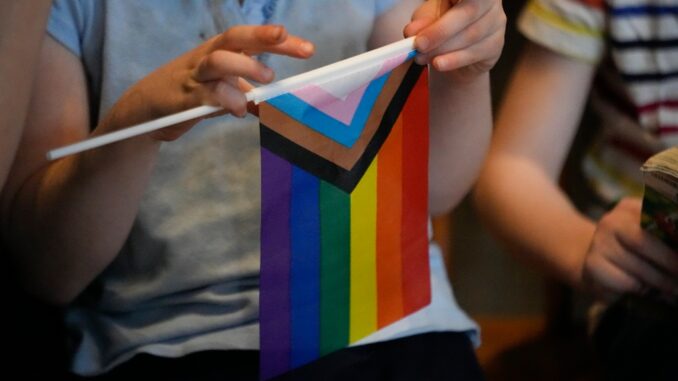
A recent comparative analysis of national survey results found that one in four adolescents in the US in grades 9 through 12 reported their sexual identity as non-heterosexual.
The findings have been published in JAMA Pediatrics.

BYPASS THE CENSORS
Sign up to get unfiltered news delivered straight to your inbox.
You can unsubscribe any time. By subscribing you agree to our Terms of Use
Latest Video
The study, which was led by Gregory Phillips II, PhD, associate professor of Medical Social Sciences and of Preventive Medicine in the Division of Epidemiology, emphasizes the need for inclusive approaches when working with sexual and gender minority youth.
InfoWars reports: From 2019 to 2021, the researchers noted a significant decrease in youth who self-identified as heterosexual (84.5% vs. 74.7%). There was an increase in those who self-identified as gay or lesbian (2.5% vs. 3%) and an increase in those who self-identified as bisexual (8.6% vs. 12%). More youths in 2021 than in 2019 also selected “not sure” for their sexual identity (5.1% vs. 4.4%).
In 2019, 5.6% of females and 3.3% of males stated that they were “not sure” of their sexual identity, against 8% of females and 2.3% of males in 2021.
The survey included 12,847 respondents (51% female and 49% male) in 2019, and 16,357 respondents (48% female and 52% male) in 2021.
The Youth Risk Behavior Surveillance System is a set of surveys that are conducted every other year by the Centers for Disease Control and Prevention (CDC). The System was established in 1991 to measure behaviour and experiences that can affect the health of US high-school students.
Questions about sexual identity were first added to the System in 2015. Initially, the responses were “heterosexual,” “gay or lesbian” or “note sure.” In 2021, the responses under the category of “not sure” were expanded to include: “I describe my sexual identity some other way”; “I am not sure about my sexual identity (questioning)”; and “I do not know what this question is asking.”
In the new comparative analysis, researchers considered whether the number of individuals who responded with “not sure” about their sexual identity changed between 2019 and 2021.
The academics behind the new study believe that the figures reflect genuine changes in the number of people who identify as non-heterosexual, but they also caution that the results reflect the fact that the System’s questions have become more nuanced and incorporate a wider variety of positions on the respondents’ sexuality.


